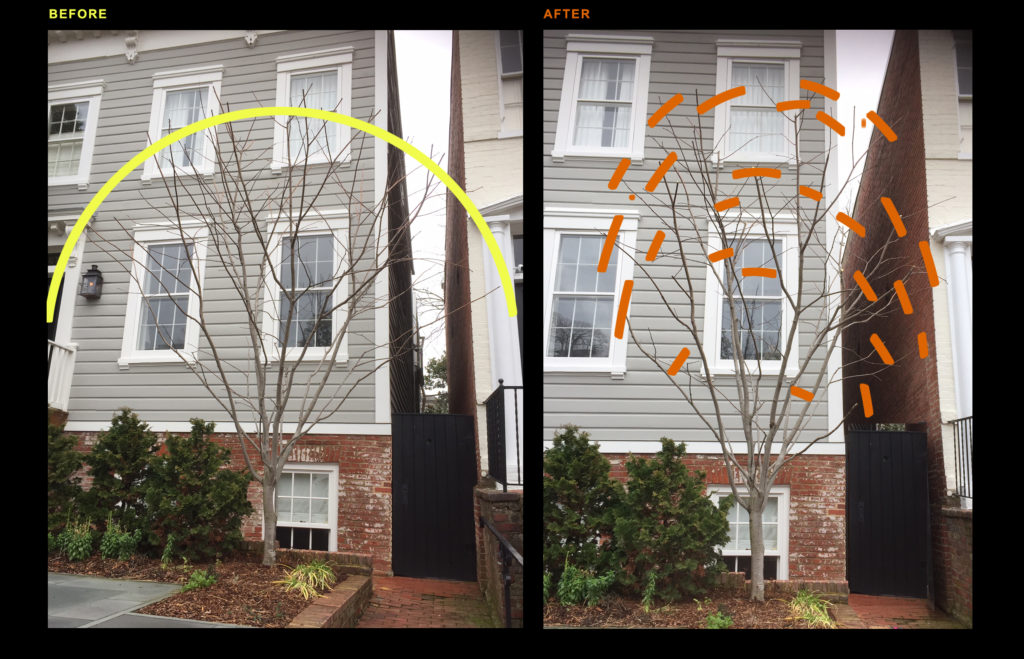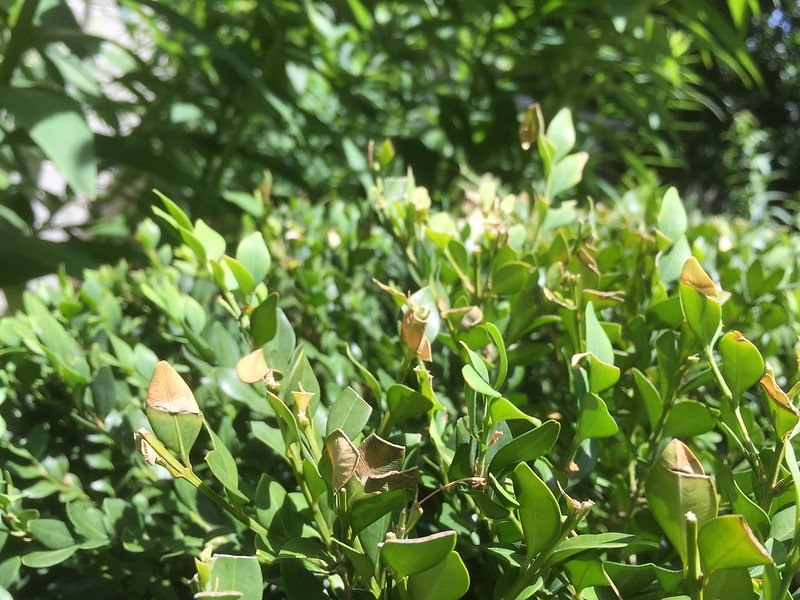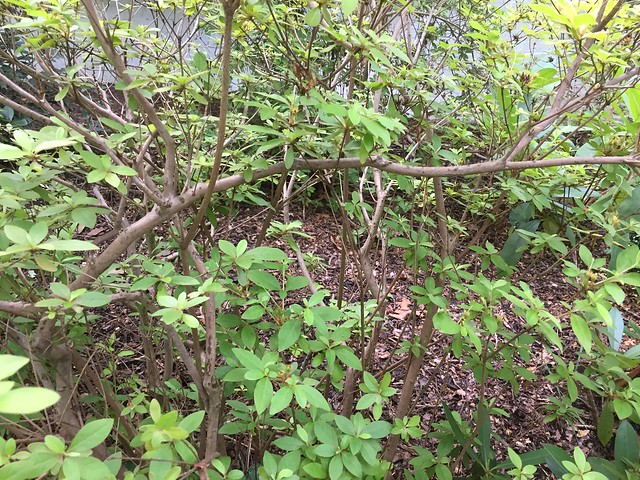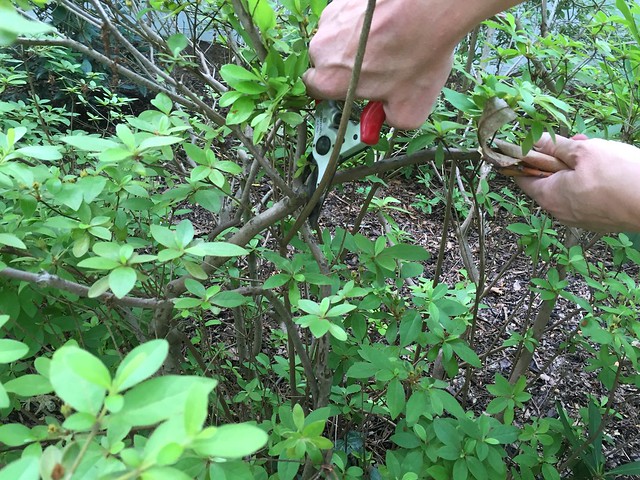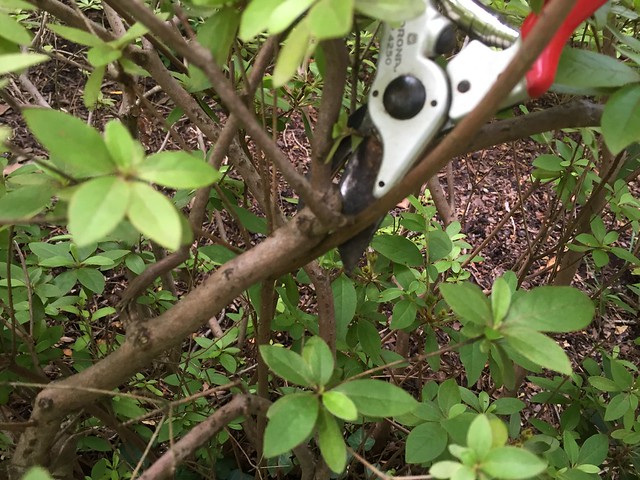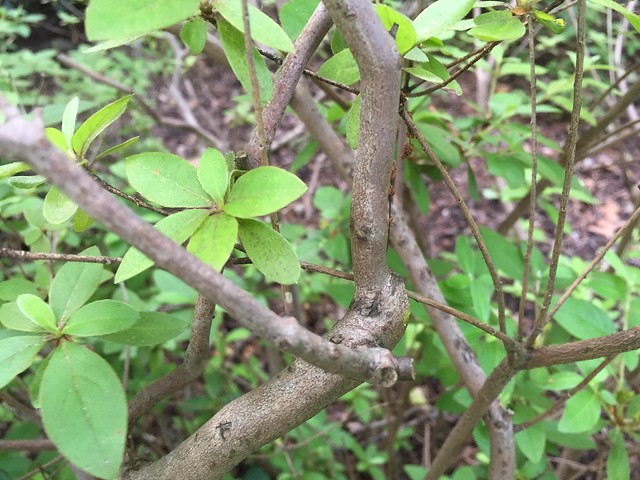Pbd : PRUNING PHILOSOPHY & STRATEGY | adele medina o’dowd | 2/3/2020
Would you like to prune shrubs and ornamental trees in your own garden? Perhaps you simply want to understand how pruning can improve the look and health of your garden even if you recruit others to prune for you. Either way, that’s wonderful! Clearly, knowing about some some basics and techniques will set you off on the right foot, but how do you begin? Well, take a deep breath and step back, then use this philosophy to help you wrap your mind around a strategy that can guide you. By definition, Selective Hand Pruning means that you proactively select which branches to prune and by doing so, you will strengthen your shrub’s natural architecture, resiliency and ability to photosynthesize.
THINK
1st step : Stand back at the curb, front door or the edge of your yard and take a careful overview of your entire front or back yard. Prioritize pruning plants in your yard based on time of year and what looks healthy and what does not.
2nd step : Consider what is a plant’s natural growth habit? — is the natural shape or form of a plant ever square?
3rd step : think about the job/role of the specific plant within the yard – what is its purpose? Screening, Flowers, Foundation, Seasonal Interest, Wildlife Habitat, Fragrance, Soil Retention, Shade, what?
UNDERSTAND that plants in the wild do not grow into rigid geometric shapes. If you consider what the ideal, natural shape is for your plants and picture what that looks like in your mind, you will see softer forms. Even if you would like to have a hedge or shrubs with a more formal shape, plant shapes are organic. It is not healthy for shrubs to be sheared and foliage to be cut in the middle, disrupting its food supply and creating wounds that take extra resources to heal. With some confidence and practice, it is not so hard to make good pruning cuts quickly. You can do it! When you are done, the best results will be evident if the yard does not appear to be obviously “pruned”, but rather, when it just looks healthy, rejuvenated and better.
APPROACH pruning a shrub or tree with the idea of being selective. Before you start, determining what you are trying to achieve, with one plant and within a plant’s grouping. Where are you encouraging growth? Are you trying to reduce size? Do you want to re-balance the shape, encourage fruit and flowers, and foliage. Don’t rush it. It may take more than 1 season to get there. Plants are resilient so you might be able to prune them “hard” but don’t expect to prune them into a shape that they will retain forever — doing that will cause them to become unhealthy “empty shells”. Remember that plants have a life cycle in which they have youthful growth, reach their full potential and then eventually decline with age. Manage your own expectations while implementing your vision. Be selective, be patient and think about the future form and health of your plant.
PRUNE
Now is the moment to make your cut choices. Choose between any competing or crossing branches and retain the best leader of your plant needs a strong one. If there are too many, eliminate some branches that emanate from one location, keeping the best for the overall plant structure. Expect to prune branches at different levels and layers within the canopy. Retain internal and secondary branches. Careful not to injure foliage and bark unwittingly, causing undue stress and literally cutting off food production photosynthesis in leaves and nutrient flow in the vascular system.
- Prune no more than ¼ to ⅓ — pruning too much at once can stress the plant
- Careful not to injure Branch Collars
- Start by pruning out any dead or weak wood (always)
- Prune long and too heavy branches so they don’t break in winter and get leggy
- Prune crossing and competing branches that are too close and parallel
- Prune suckers and waterspouts when the plant is dormant
- Next let light and air in — make “holes” in the canopy evenly over the entire plant so foliage blends but light and air can filter down into the interior
- Stagger and vary the depth of your cuts inside the plant
- Then begin shaping the whole thing based on your vision and knowledge of the plant’s natural form, move forward, stand back, blur your eyes, look at the plant or group, as a whole
- Consider the interior branch architecture — what should that look like even if you don’t see it from the exterior? Are the scaffold branches strong? Are the smaller, lateral branches balanced all over and nicely spread?
- Careful with hollies and other plants with branches that shoot from new cuts — “hide” cuts further inside foliage or low to the ground
- Careful in Aug/Sept — let shrubs remain a bit rough at this typically stressful time of year to conserve energy and foliage
- Remember that evergreens shed leaves 3 times/yr and sometimes it’s good just to shake or hand remove the brown leaves or needles that are hanging on without pruning branches at all
CLEAN UP AS YOU GO
- CLEAN TOOLS OFTEN. Use bleach wipes or dip tools between plants, beds or areas.
- Careful NOT to spread disease! Look for pest infestations and also good predators!
- Contain pathogens by having a bag or blanket right next to you as you prune, throwing them inside to keep infected trimmings and infested foliage together and OFF the beds. (Friends don’t let friends use leaf blowers. You can spread box blight with them).
PRUNE WITH FRIENDS
Unless you are already hooked on the zen of pruning, we understand that sometimes it can seem like an overwhelming job. But pruning with your friends makes it easy. You can relax and keep each other company. When you prune with friends and family, you can compare ideas for which cuts to make or not to make and ask for extra eyes to help you see the plant or the grouping from different views, especially at a distance. This is VERY helpful when you are standing inside a big boxwood, a densely planted azalea bed, or standing on a ladder looking up into the branches of your Japanese Maple or Flowering Cherry. Talk about it, as you work. Offer to help your neighbor and ask them to help you. Pruning is really fun with friends! Learn and gain confidence together. Enjoy yourselves and you’ll be done in no time.

